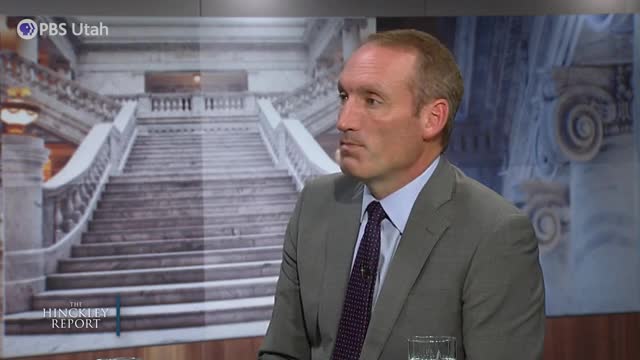Utah leaders push to expand power generation as data centers and growth raise demand
This article was created by AI summarizing key points discussed. AI makes mistakes, so for full details and context, please refer to the video of the full meeting. Please report any errors so we can fix them. Report an error »

State leaders and commentators on The Hinckley Report this week said expanding electricity generation is a priority as Utah's economy and population grow and as data centers and new technologies increase power demand.
"The senate said they want a triple energy production. The governor wants a double energy production," host Jason Perry said on the program summarizing public statements. Panelists also discussed small modular nuclear reactors, faster permitting and regulatory actions to support new generation.
Why it matters: rising demand from artificial intelligence data centers and broader economic growth could require major new generation and transmission resources. How those costs are allocated and how projects are permitted will shape ratepayer bills and local land-use decisions.
Chris Blake, a partner at RRJ Consulting, said Utah must balance growth with reliability and affordability for ratepayers. "We're they these **** up huge amounts of power and we can't do that just sort of in the natural growth the way that we've done been doing that," Blake said, explaining the strain large data centers place on power systems. He and other panelists discussed efforts by state legislators to ensure large technology users pay appropriate infrastructure costs rather than socializing them across all customers.
Panelists also noted nuclear energy has been part of state leaders' long-term planning discussions. "Nuclear is something that our legislative leaders and our governor have been behind for a number of years," Dennis Romboy said on the program, but he added that traditional nuclear plants typically take decades to build and that timelines for any new reactors are uncertain.
The program referenced a recent state legal action and other regulatory efforts intended to speed permitting and clarify rules for new generation. No contracts, permits or legislative approvals were announced during the broadcast; the discussion described priorities and potential paths lawmakers and regulators may pursue during the 2025 session.
Next steps described on the program include potential bills this session to adjust regulatory frameworks and to define how large power consumers (for example, hyperscale data centers) contribute to generation and transmission costs. Officials and commentators said further detail will emerge as bills are drafted and as regulatory proceedings proceed.
"The senate said they want a triple energy production. The governor wants a double energy production," host Jason Perry said on the program summarizing public statements. Panelists also discussed small modular nuclear reactors, faster permitting and regulatory actions to support new generation.
Why it matters: rising demand from artificial intelligence data centers and broader economic growth could require major new generation and transmission resources. How those costs are allocated and how projects are permitted will shape ratepayer bills and local land-use decisions.
Chris Blake, a partner at RRJ Consulting, said Utah must balance growth with reliability and affordability for ratepayers. "We're they these **** up huge amounts of power and we can't do that just sort of in the natural growth the way that we've done been doing that," Blake said, explaining the strain large data centers place on power systems. He and other panelists discussed efforts by state legislators to ensure large technology users pay appropriate infrastructure costs rather than socializing them across all customers.
Panelists also noted nuclear energy has been part of state leaders' long-term planning discussions. "Nuclear is something that our legislative leaders and our governor have been behind for a number of years," Dennis Romboy said on the program, but he added that traditional nuclear plants typically take decades to build and that timelines for any new reactors are uncertain.
The program referenced a recent state legal action and other regulatory efforts intended to speed permitting and clarify rules for new generation. No contracts, permits or legislative approvals were announced during the broadcast; the discussion described priorities and potential paths lawmakers and regulators may pursue during the 2025 session.
Next steps described on the program include potential bills this session to adjust regulatory frameworks and to define how large power consumers (for example, hyperscale data centers) contribute to generation and transmission costs. Officials and commentators said further detail will emerge as bills are drafted and as regulatory proceedings proceed.
View the Full Meeting & All Its Details
This article offers just a summary. Unlock complete video, transcripts, and insights as a Founder Member.
✓
Watch full, unedited meeting videos
✓
Search every word spoken in unlimited transcripts
✓
AI summaries & real-time alerts (all government levels)
✓
Permanent access to expanding government content
30-day money-back guarantee
